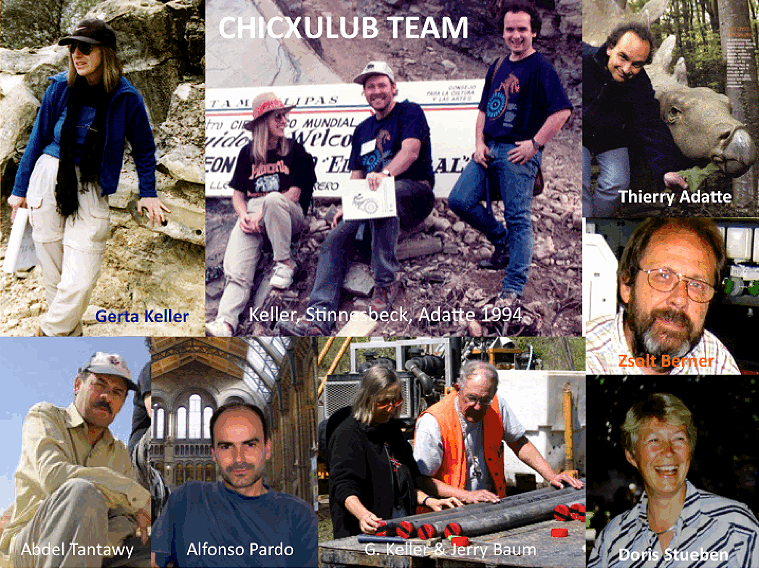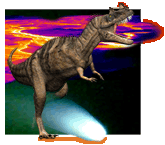
Keller’s team from the 1990s through 2010 investigating the cause and effects of the KTB mass extinction and testing the Chicxulub impact hypothesis.
In the 1980s as the impact-kill hypothesis of Alvarez and others gained popular and scientific acclaim and the mass extinction controversy took an increasingly rancorous turn in scientific and personal attacks fewer and fewer dared to voice critique. Two scientists stand out: Dewey McLean (VPI) and Chuck Officer (Dartmouth University). Dewey proposed as early as 1978 that Deccan volcanism was the likely cause for the KTB mass extinction, Officer also proposed a likely volcanic cause. Both were vilified and ostracized by the increasingly vocal group of impact hypothesis supporters. By the middle of the 1980s Vincent Courtillot (Physique de Globe du Paris) also advocated Deccan volcanism, though not as primary cause but rather as supplementary to the meteorite impact. Since 2008 Courtillot has strongly advocated Deccan volcanism as the primary cause for the KTB mass extinction.
In the early 1980s Gerta Keller investigated the nature and biological effects of a meteorite impact during the late Eocene and was the first to discover multiple glass spherule (microtektites) layers indicating multiple impacts, but no mass extinction (Keller et al., 1983, Science). By 1984 she began working on the KTB mass extinction of the El Kef, Tunisia, stratotype section, the world’s most complete KTB transition. As a virtual unknown she was introduced at the Snowbird, Utah, Meeting on impacts and mass extinctions as George Keller – and was greeted with much laughter as she walked onto the stage. Laughter soon turned to derision as the results of the El Kef study unveiled and showed that the mass extinction could not have been instantaneous, the impact did not cause the extinction of all but one species of planktic foraminifera as claimed, that there were survivors, the mass extinction was selective over a long time span – in short, a meteorite alone could not have caused this extinction pattern. With this debut Keller became the new target, first wooed to change her mind and join the winning team, and when that didn’t work increasingly attacked. With the discovery of the Chicxulub impact crater, Keller assembled a small team of multidisciplinary investigators that systematically analyzed important KTB sections with the objective to test the impact hypothesis. Foremost among these collaborators are Thierry Adatte, Wolfgang Stinnesbeck, Zsolt Berner, Doris Stüben, and a host of former students and postdocs. The work summarized here is a result of this longterm effort.

